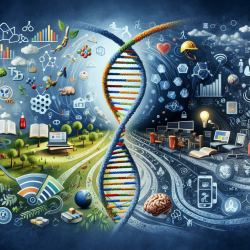Understanding the Autism Epidemic: Practical Insights for Online Therapy Practitioners
The rise in autism diagnoses in the United States has been alarming. Between 2005 and 2010, the number of children aged 6 to 21 receiving special education services under the autism category increased by 91%. A recent study titled A macroepigenetic approach to identify factors responsible for the autism epidemic in the United States delves into the possible reasons behind this surge, offering valuable insights for practitioners.
The Macroepigenetic Approach
Macroepigenetics examines the impact of environmental factors, including diet and toxic substance exposure, on gene expression and neurodevelopment. This approach can help us understand why autism prevalence varies geographically. For example, gene variants of paraoxonase-1 (PON1) are associated with autism in North America but not in Italy, indicating regional specificity in gene-environment interactions.
Key Findings from the Research
- Dietary Factors: The study highlights that the U.S. food supply, particularly the consumption of high fructose corn syrup (HFCS), plays a significant role in altering gene expression. HFCS consumption can lead to mineral imbalances, such as zinc insufficiency, which impacts neurodevelopment.
- Toxic Substance Exposure: Exposure to heavy metals like mercury and organophosphate pesticides also contributes to the autism epidemic. These substances can interfere with gene expression, leading to adverse neurodevelopmental outcomes.
- Gene Variants: The study found that PON1 gene variants are linked to autism in the U.S. but not in Italy, suggesting that dietary and environmental factors specific to the U.S. are at play.
Implications for Online Therapy Practitioners
Practitioners can leverage these findings to improve their therapeutic approaches:
- Personalized Diet Plans: Encourage families to adopt diets low in HFCS and rich in essential minerals like zinc and magnesium.
- Environmental Assessments: Consider the environmental factors that may be impacting the child’s development, such as exposure to pesticides and heavy metals.
- Further Research: Stay updated with ongoing research in macroepigenetics to continually refine therapeutic approaches.
Understanding the complex interplay between diet, environmental toxins, and gene expression can help practitioners develop more effective, personalized treatment plans for children with autism.
To read the original research paper, please follow this A macroepigenetic approach to identify factors responsible for the autism epidemic in the United States.










